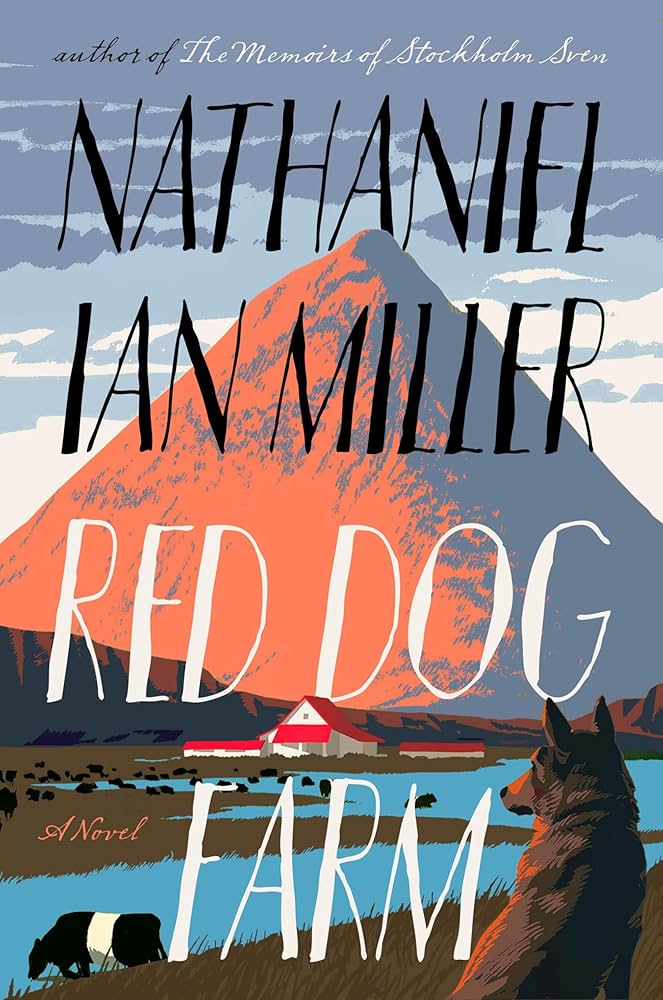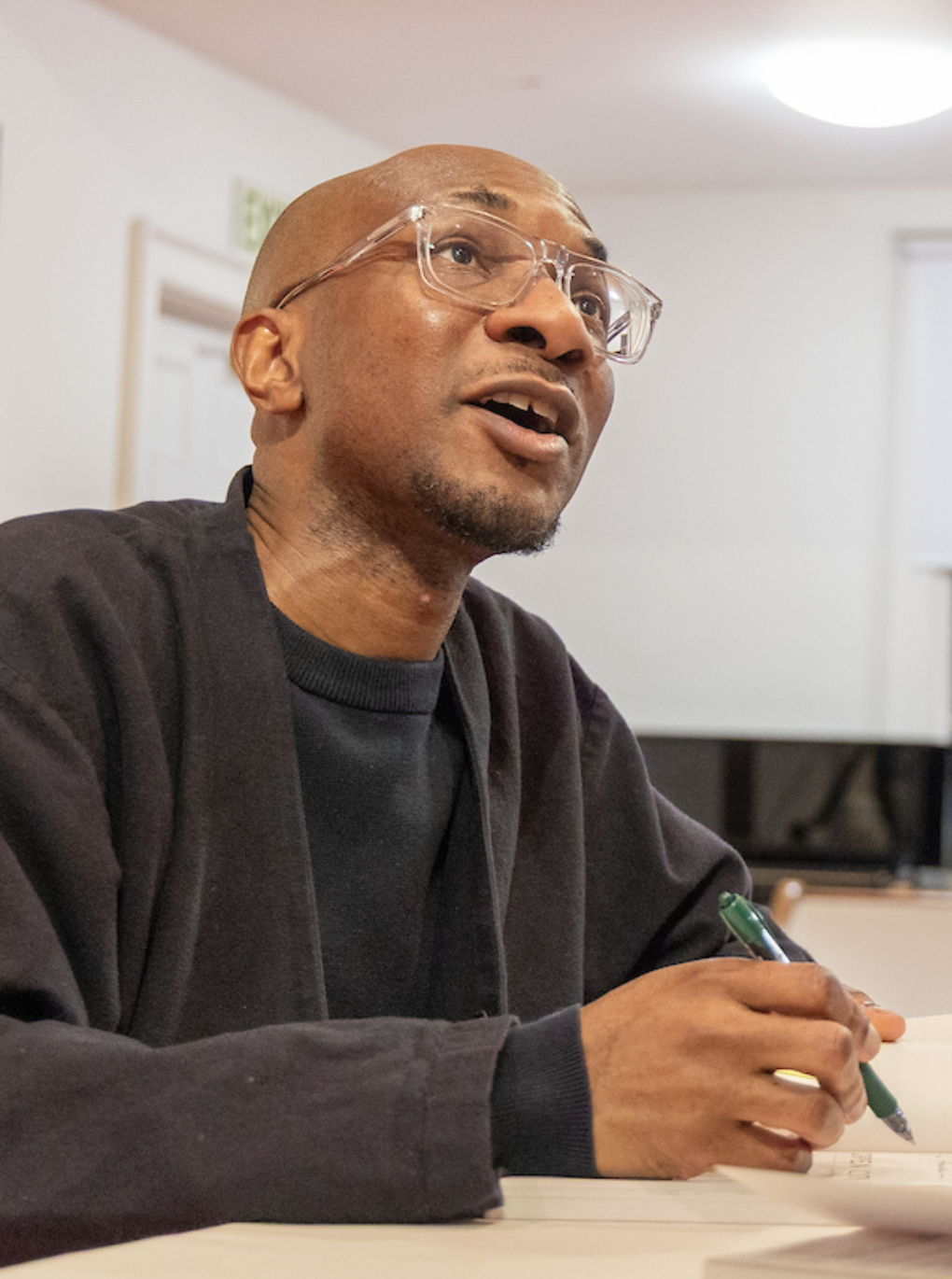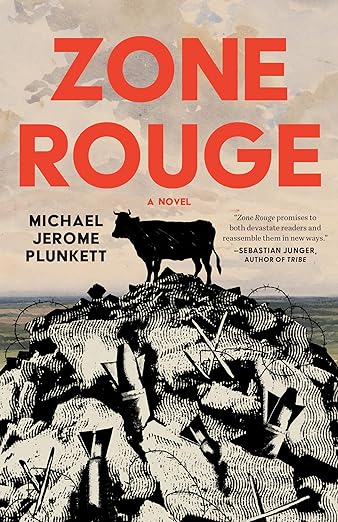
In this conversation-in-correspondence, TALIA LAKSHMI KOLLURI and VAUHINI VARA discuss Vauhini’s electrifying collection, This Is Salvaged, and its themes of connection, the evolution of the self, and the incomprehensible nature of grief. Kolluri and Vara explore craft, how work evolves over time, and the ways time infuses stories with emotional depth.
Talia Lakshmi Kolluri: I have so many things to ask you about your incredible collection, but before we get started, I want to congratulate you on being named a finalist for the Pulitzer Prize for The Immortal King Rao! What stage of the pre-publication process were you in for This Is Salvaged when you got the news?
Vauhini Vara: Thank you! It was about a month after finishing the copy-editing and proofreading process for the story collection; a cover had already been drafted, but they were able to change it to add a line about the Pulitzer finalist status.
TLK: Although this is technically your second book, some of these stories were written much earlier in your writing career, while you were in your MFA program. Can you share how your writing has changed over time? Have any of those earlier stories transformed significantly, or did you find that your themes and voice were already consistent from the beginning?
VV: I just counted them up, and it turns out I started half of these stories in graduate school—so 13 to 15 years ago. When I compare those early stories with the newer ones, I notice that the recent stories, in general, tend to be more experimental, whether in content or form. It might seem like I became a more experimental writer, but the truth is I also wrote experimental stories in graduate school; it’s just that I was still learning how to do it at the time, and none of them quite cohered. I’m glad my conclusion back then wasn’t that experimental approaches weren’t worth trying. I think what I learned through those stories made it possible for me to write a later series of stories—the newer ones in this collection—that are important to me (and that I hope readers find meaningful, too).
The other interesting thing about spending about 15 years on a collection—and aging from 26 years old to 40 in the process—is the way it enriches the revision process. I never would have imagined, when I was in my late twenties and writing about a character who is the mother of a young child, that I would still be working on the same story when I had a 7-year-old, and that the story would be improved by that personal experience.
TLK: I love this! How do you feel about revision? I know some writers love it, some loathe it, and some are indifferent. What’s it like for you?
VV: Oh, I adore revision. I come up with first drafts quickly—with stories or essays, it often takes me just a couple of hours—but, for me, the more interesting part is reading and rewriting and reading and rewriting. It’s through this process that I start to better understand on an intellectual level what was driving me to write the first draft, which lets me deepen the material in a new way. I alluded to this earlier, but when I do that over more than a decade, I change as a reader, which means a younger version of me gains insight from someone who understands her well but is (hopefully) more mature and skilled. Basically, I became a dream reader for the version of myself who wrote the earlier draft.
TLK: This is such an eloquent explanation of something I struggle to articulate. I also love to hear about writers’ inspirations. Between this collection and The Immortal King Rao, I see core themes emerging in your work about connection, personal agency, and the complications of grief. Do you see your work in conversation with other writers, and are there writers or pieces that were particularly inspirational for this collection?
VV: The collection’s epigraph is from the Lorrie Moore story “Real Estate”—the part that repeats the word “Ha!” 982 times in a row. (Hat tip to Rumaan Alam for doing the math.) I admire Moore for how she wrings humor out of the most sorrowful raw material of life—to be more exact, how she’s able to deploy humor as an expression of sorrow. I learned to write stories in the early and mid-2000s, at a time when we were all reading short-story writers with big personalities: Lorrie Moore, but also Junot Díaz, Adam Johnson, Denis Johnson, George Saunders, and Zadie Smith. I think that informed these stories a lot.
Over the years, I started reading more widely and admiring writers that situate individual characters within broader social structures—families, communities, societies. Some writers who I kept turning to for inspiration as I tried to do this myself include (along with some of the writers mentioned above) Lucia Berlin, Louise Erdrich, Edward P. Jones, Yiyun Li, Justin Torres, and Jenny Zhang.
TLK: Speaking of social structures, many of your characters feel both deeply disconnected or untethered from other people, but simultaneously consumed by a tremendous longing for connection. I’m thinking in particular of Sheila in “I, Buffalo,” a newly single woman who goes on a solitary alcoholic bender right before a surprise visit from her sister, brother-in-law, and young niece. Sheila’s choices are so reckless that there’s no possible outcome other than to repulse her own family. As I read this story, I got the sense that there may be a part of her that does this deliberately. It’s almost as though she chooses to push her sister away before she can be rejected. And yet, she possesses this fierce love for her niece that overwhelms her. How did you go about developing this tension and balance between almost deliberate isolation and a desire to connect?
VV: That’s such a thoughtful reading of the story; thank you for your close attention to it. Your question made me want to re-read one of the earliest drafts to see how it evolved. I found one from June 2009, in which—reading it with these 14 years of distance—Sheila is much more actively aggressive toward her sister, while her sister is condescending toward her. I sort of hate both characters in that version of the story.
I think the 14-year revision process involved slowly fine-tuning that relationship, such that—I hope—a reader takes the negative vibes between the sisters not at face value but as something deeper and more interesting: as being borne of an old, deep love between them that has been lost—for which they blame each other. Maybe that part applies to writing any potentially “unlikeable” character—it helps to show the deep need for connection (and fear of not attaining it) that underlies that unlikeability.
In the end, I think achieving the right balance had less to do with “fixing” an individual character than with shifting the dynamic between and among characters. It has to come through in their dialogue; in the way in which the characters physically relate to one another.
TLK: I love knowing that the evolution of this story included revising with sensitivity toward the sisters’ history and how that affects their relationship. As the youngest of two sisters myself, I connected with how their relationship patterns were built on so much that was unspoken. I’m also interested in your thoughts about unlikability because I found that Sheila did some unlikeable things, but I felt so tender toward her, which speaks to the way you wrote her. Does true unlikeability come from a writer’s reluctance to dig deep into a character’s motivations, or is it something else?
VV: Ooh, I don’t know! I’ve always wondered if maybe we’re overthinking it all concerning likeability in literature, and that the question of whether we want to spend time with a character isn’t so different from the question of whether we want to spend time with a real person. Of course, there are biases built into the question of likeability—but I think the biases when we read aren’t so different from the biases we bring with us into the real world. For me, maybe it’s less about digging into a character’s motivations and more about drawing out what’s charming or otherwise attractive about that person, despite the rest of it. Humor? Self-awareness about one’s shortcomings? A way of revealing—sometimes despite their best efforts—that, beneath it all, they’re vulnerable? All of the above?
“I find loss incomprehensible, and I think the incomprehensible is fertile ground for fiction”
TLK: One issue that I thought you dealt with beautifully and with such honest tenderness is grief, and not just grief itself, but grief as it is experienced in different contexts and at different ages. What I mean to say is that grief is imperfect and uneven and can include reconciling how we, the grievers, see ourselves. Can you talk a bit about how you approached revealing the internal experience of grief in your characters and what you were hoping readers would see in them?
VV: I wrote my first short stories when I was in college, just after the death of my older sister from cancer. She was 20; I was 18. I think because my development as a writer was so intertwined with my grief, it became almost inextricable from my short fiction. The truth is that I hadn’t realized until I started reading reviews of this collection, that each story is about loss of some kind. I find loss incomprehensible, and I think the incomprehensible is fertile ground for fiction—maybe short fiction, in particular. In these stories, I just kept writing toward that incomprehensible place, as if I was searching for comprehension while knowing that was an impossible goal.
TLK: As I was reading this collection, I had your essay “Ghosts,” in mind, particularly in the sense of circling the experience of grief and looking at it from different angles to articulate it. In many ways, art-making is a quest to understand the self. When you’re writing so close to your own emotions, what are some ways you take care of yourself during that process?
VV: I often tell myself—and my husband, also a writer, often reminds me—that no one’s putting a gun to my head; I write because I want to, and I get to choose what I write about. There is plenty of subject matter that is personal to me that I just won’t write about. Having that sense of freedom—that sense that I have a choice in the matter—helps me.
TLK: Speaking of writing across ages, two stories, in particular, struck me as masterful exercises in writing from the perspective of a child.
The first is “Puppet Master Made the Puppets,” which is narrated by a very young girl over a fairly short period. Narration from a child’s point of view is notoriously tricky and your execution of it was so moving to me. I think what struck me about this story is that adult perceptions recede into the background and we see everything, from the existence of parents as entities in relation to children, to the ways a story told to a child can quickly balloon into something that feels real, to a child’s perception of her body, all from a child’s vantage point. Things are conveyed in ways that make sense to her but largely avoid adult logic. The effect is that the story is full of overwhelmingly familiar feelings (because we were all children once), but also feels wholly new. From a craft perspective, how did you work your way toward this point of view and how difficult was it to craft the voice that felt right?
VV: The voice for that story—annoying as it is when writers say this—came to me fully formed. I don’t know where it came from, maybe from the child that still lives somewhere inside of me. It’s a hard voice to channel for adults because we’re so far from it. I don’t know how it showed up in that story, but then, there it was. I haven’t heard it since, though.
TLK: I love hearing this! It’s true, sometimes the voice just arrives! Did you find you needed to revise this piece significantly or did the narration flow just as easily as the voice?
VV: I revised the piece, but I couldn’t tell you quite what I did. I will tell you something that haunts me about it, which is a Goodreads review from someone who read that story when it was published in McSweeney’s years ago and admired it at the time—I remember hearing from her—and, in her review, says that that version is “def superior” to the revised version in the collection. Maybe she’s right! I sometimes wonder—given that I’ve spent a decade-plus on each of the books I’ve published—if some of my work would have been better if I’d just stopped a couple of versions ago.
TLK: As writers, I don’t think we can ever know if we’re ever done with a story because we’re always personally evolving. The second story that is seared into my memory seems to consider this concept of self-evolution. In “The Eighteen Girls,” you chronicle the childhood of one girl from birth to adulthood and her life as it exists in relation to her sister. This was gorgeous and deeply resonant of the emotional texture of sisterhood, and again a reckoning with grief in childhood. I also thought it was a beautiful depiction of how to conceive of the self. How did you develop this structure? Were there other approaches that you considered using before you chose this one?
VV: I started drafting the story about 10 years ago. I’d either just turned 30 or was about to. It’s that age when you become enough of a grown-up to realize that you’re no longer the person you used to be—or you’re a different version of that person, in any case; you almost think of her as “she” rather than “I.” The story started from a desire to try to pinpoint how one person changes into another over time. It had the same form it does now—vignettes about a series of girls of different ages—but for a long time, there were many more of them. First, it was called “The Thirty Girls.” Then it was “The Twenty-Four Girls.” It was my editor, Alane Mason, who suggested eighteen girls, and she was right.
TLK: I love this notion of seeking to explain the transformation of a person over her life and I agree that eighteen girls is a perfect number for this story. This reminds me of another theme I’ve seen in your work, which is the concept of coming of age in various ways (though not limited to adolescence). Is this a deliberate choice, or is this something that has emerged naturally?
VV: I guess it’s emerged naturally because I wasn’t aware of it until you pointed it out! As it happens, my next novel—the one I’m turning to after I finish my forthcoming collection of essays—is called Kindergarten and is about how we learn and evolve as humans.
TLK: That sounds fantastic! I can’t wait to read all your forthcoming work. Thank you for sharing so much insight into your work and process.
Vauhini Vara is the author of This is Salvaged, named one of the most anticipated books of the year by Lithub, Electric Literature, and The Millions, and The Immortal King Rao, a finalist for the Pulitzer Prize and the National Book Critics Circle’s John Leonard Prize. She is also a journalist, writing for Wired, The New York Times Magazine, and others. She teaches at Colorado State University as a 2023-24 Visiting Assistant Professor of Creative Writing and at the Lighthouse Writers Workshop’s Book Project. She is also the secretary of Periplus, a mentorship collective serving writers of color.
Talia Lakshmi Kolluri is a mixed South Asian American writer from Northern California. Her debut collection of short stories, What We Fed to the Manticore (Tin House 2022), was a finalist for the 2023 Carol Shields Prize for Fiction and was longlisted for the 2023 Andrew Carnegie Medal for Excellence in Fiction, the 2023 Aspen Words Literary Prize, and the 2023 Pen/Robert W. Bingham Prize for Debut Short Story Collection, and was selected as a 2023 ALA RUSA Notable Book. Her short fiction has been published in Ecotone, Southern Humanities Review, The Common, One Story, Orion, Five Dials, the Adroit Journal, and others. A lifelong Californian, Talia lives in the Central Valley with her husband and two cats.




